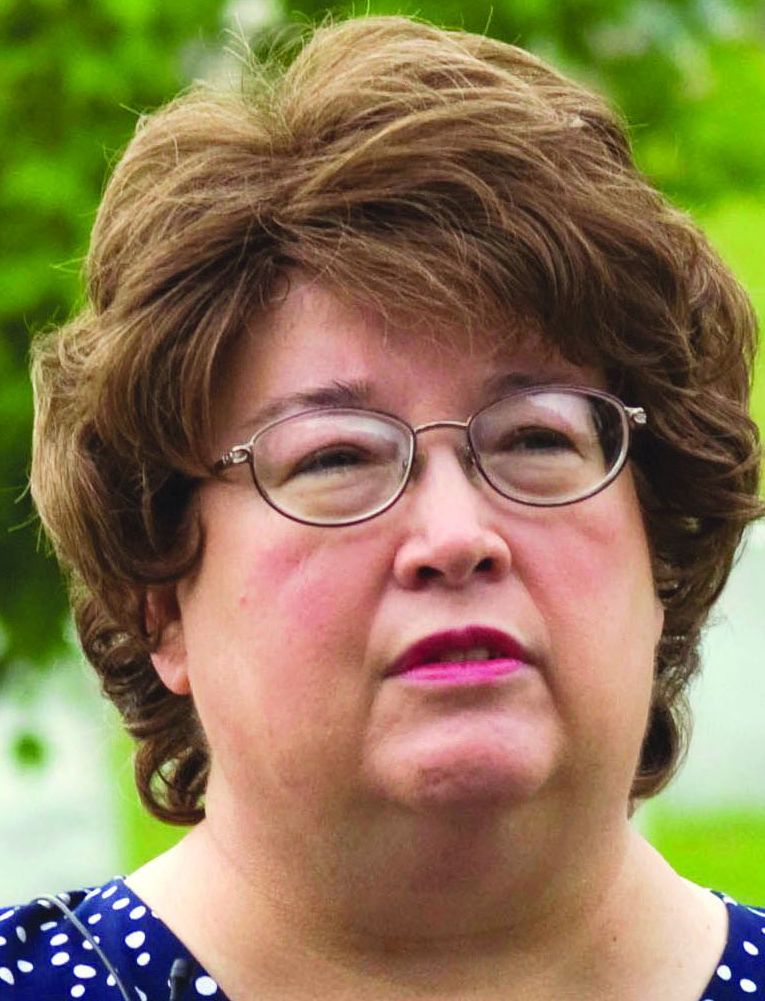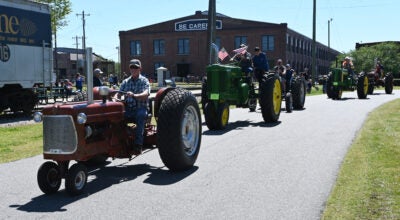Number of Union dead connected to prison a moving target
Published 12:00 am Friday, July 4, 2014
SALISBURY — Sue and Ed Curtis say not knowing exactly how many Union soldiers died at the Salisbury Confederate Prison during the Civil War is one of the things that keeps them going.
“I don’t know if anyone will ever know,” Sue Curtis says.
Sue Curtis is president of the Salisbury Confederate Prison Association Inc., and Ed Curtis publishes the association’s quarterly newsletter.
Together, the couple also organize the annual Salisbury Confederate Prison Symposium, an event put on by the United Daughters of the Confederacy.
As others do, these highly informed Civil War historians say the number of Union dead at the prison had to be well below the 11,700 figure inscribed on a granite monument in the Salisbury National Cemetery off Railroad Street.
But they are leery of affixing an exact number, nor do they think the “11,700” figure should ever be sandblasted off the monument.
“I don’t want anybody to deface a monument,” Sue Curtis says.
Every time the couple heard author Louis A. Brown speak to an audience before he died, Brown put the number of Union dead at under 4,000.
“He’s got the ballpark number, probably,” Sue Curtis says of Brown, who wrote a book on the Salisbury Prison.
The couple also point to thermal imaging from a helicopter done by Bob Melia about 17 years ago. Melia flew over the disturbed earth representing the burial trenches used for the Union dead and ended up agreeing with Brown, that less than 4,000 men had been buried there.
Over the years, by holding the symposium, being involved with the association and interacting with descendants of Union soldiers from across the country, Ed and Sue Curtis say they probably have added about 100 Union soldier names not identified by Brown in an appendix to his book.
They also have learned through their own research that many men listed as having been sent to Salisbury may have ended up at South Carolina Confederate prisons in Andersonville or Florence.
At the end of the Civil War, when a lot of prisons were closing, prisoners were being shipped back and forth, Sue Curtis says.
The prison hospital in Salisbury also was the last place to which many ailing prisoners wanted to be sent once the population swelled in late 1864 and starvation and disease set in.
Some prisoners ended up in holes dug into the prison grounds for shelter. They might have died there, with no documentation on the hospital register, while their friends kept answering for them in roll calls so they could have their rations.
Other Union soldiers thought to have died here may have survived the Salisbury prison but perished on their 1865 march to Greensboro, on a train to Wilmington or before a prison exchange at Richmond, Sue Curtis says.
Confusion also creeps in when assumptions are made about whole regiments and companies being sent as prisoners to one location when they might have been split up among different prisons.
Some men on the lists of dead might be entered incorrectly or more than once because of the regional differences in spellings between the North and South.
“I wish we did have an exact number,” Ed Curtis says, “but I’m like Sue. I don’t know if we’ll ever know.”
The Curtises usually end up saying between 4,000 and 5,000 Union soldiers died in Salisbury because many Union soldiers who have been traced to Salisbury as their last location are not on the 1868 Roll of Honor usually cited by modern-day historians.
The Roll of Honor had 3,504 Union men dying at the Salisbury prison.
Ed and Sue Curtis say no matter what the number is, it’s a lot of men to have died in one location, which wasn’t even a battlefield.
“No matter how many people died here,” Ed adds, “it’s bad enough.”
The couple agree with Kings Mountain historian Mark Hughes that the VA should have some kind of marker or monument where the trenches are to list names of Union soldiers buried at the National Cemetery.
They say they have traveled to cemeteries from Georgia to New York and as far west as Minnesota where they have seen these kinds of markers.
“It’s very informative and makes it more real,” Sue says. “… Every director says sure, ‘I’ll help you, but you’ll have to pay for it.’”
To its credit, the VA installed an interpretive marker near the National Cemetery monument in 2009. With its text, the VA concedes previous estimates of the Union dead in Salisbury probably were inflated.
“Early speculation as to the number of dead ranged from 1,800 to more than 10,000,” the 2009 marker says. “Because there was not a comprehensive list of the dead, the government decided to erect a monument to commemorate the soldiers who died at the prison and place the ‘unknown’ markers at the end of the trenches.
“During this time, the Army … estimated 11,700 burials based on limited trench excavations. This number was ultimately inscribed on the memorial.
“However, based on earlier documentation and the death figures from 1864-65 when the prison population peaked, a much lower number is more likely.”
The Confederate government established the Salisbury Prison in 1861 on the site of an old cotton factory. A portion of the grounds was enclosed by a stockade fence, and it was designed to hold 2,500 prisoners.
Conditions at the prison drastically changed Oct. 5, 1864, when 5,000 prisoners of war were transferred to Salisbury from Richmond.
By the end of the month, the prison population had swelled to more than 10,000 men.
Those prisoners who couldn’t find shelter dug burrows in attempts to stay warm and dry. Food rations and potable water became scarce and men began dying by the hundreds from disease and starvation.
Each morning the dead were taken to the “dead house” before being removed later for burial in trenches, located in a cornfield west of the prison.
The VA acknowledges that roughly 3,700 men died between October 1864 and February 1865. Surviving prisoners were released toward the end of February 1865 in a prisoner exchange.
Union forces burned down the prison in April 1865.
When the Curtises accompany visitors to the Salisbury National Cemetery off Railroad Street — there’s a whole other active burial National Cemetery site next to the Hefner VA Medical Center — the number 11,700 is a good starting point for discussion.
But will they ever know a real number for the people who died at the Salisbury Prison?
“I guess when we die and go to heaven, we can ask,” Sue says.
Contact Mark Wineka at 704-797-4263.





